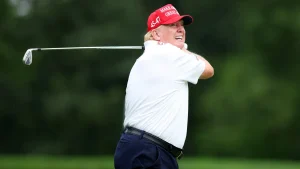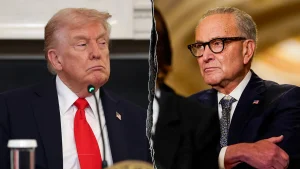Disruption and Defiance: Israel Philharmonic Orchestra’s Emotional Paris Performance Sparks Controversy and Standing Ovation
Tensions Flare at Prestigious Concert Hall as Musical Diplomacy Meets Political Protest
In a poignant display of cultural resilience amid geopolitical tensions, the Israel Philharmonic Orchestra’s recent Paris performance transformed from a celebration of musical excellence into a profound statement of national identity. What began with disruptions—audience members shouting protests and igniting flares in the historic concert hall—concluded with a defiant ten-minute standing ovation and a stirring rendition of “Hatikvah,” Israel’s national anthem. The emotionally charged evening highlighted the increasingly complex intersection of art, politics, and cultural expression on the international stage during times of conflict.
The prestigious Philharmonie de Paris, known for its architectural splendor and acoustic perfection, became an unexpected battleground of ideologies as the first notes filled the air. Several attendees, strategically positioned throughout the venue, disrupted the opening movements with shouted slogans and the sudden, alarming illumination of flares—their bright red glow creating an eerie contrast against the elegant surroundings. Security personnel moved swiftly through the aisles, escorting protesters from the premises while the orchestra briefly paused before resuming their performance with remarkable composure. “In my thirty years of attending classical performances, I’ve never witnessed such a deliberate attempt to silence musicians,” remarked concertgoer Elise Dubois, who traveled from Lyon specifically for the event. “The orchestra’s response—to simply continue playing with even greater passion—spoke volumes about their professionalism and determination.”
Historical Context and Cultural Significance Amplify Concert’s Meaning
The Israel Philharmonic Orchestra, founded in 1936 as the Palestine Orchestra, has long served as both a cultural ambassador and a symbol of national resilience. Its very inception—bringing together Jewish musicians fleeing European persecution—connects the ensemble to narratives of survival and cultural preservation that resonate deeply with Israeli identity. This Paris performance, occurring against the backdrop of heightened international tensions and competing narratives about the ongoing Middle East conflict, carried symbolic weight far beyond its musical program. Cultural analysts note that the orchestra’s international tours have increasingly become focal points for both expressions of solidarity and sites of protest as global opinions about Middle Eastern politics grow more polarized.
Music critics present at the Paris concert highlighted the exceptional technical precision and emotional depth the musicians displayed, particularly following the initial disruptions. The program, featuring works by both Jewish composers and universal classical repertoire, was described by Le Monde’s senior music correspondent as “a masterclass in musical diplomacy—selections that spoke simultaneously to specific cultural heritage and universal human experiences.” Conductor Lahav Shani, who assumed leadership of the orchestra in 2020, demonstrated remarkable poise throughout the evening, maintaining the ensemble’s cohesion despite the tense atmosphere. “What we witnessed was the transformation of potential chaos into profound beauty,” wrote critic Jean-Pierre Moreau. “The musicians’ refusal to be silenced became an artistic statement in itself, elevating their technical performance into something approaching the transcendent.”
Audience Response Reveals Deep Cultural Divides and Unexpected Unity
The conclusion of the formal program marked a dramatic shift in the concert hall’s atmosphere. What began with division culminated in one of the most extended and enthusiastic ovations in recent memory at the venue. For ten uninterrupted minutes, the vast majority of attendees stood in applause—a gesture interpreted by many as not merely appreciation for the musical quality but a deliberate political statement against the earlier disruptions. “The standing ovation felt like a referendum,” observed cultural sociologist Dr. Camille Laurent, who studies public expressions of solidarity in artistic contexts. “It represented a collective reclaiming of the space after the attempted disruption. Whether attendees were specifically supporting Israel or simply defending the principle that art deserves to be heard without interruption, the sustained applause communicated something beyond conventional appreciation.”
The orchestra’s decision to perform “Hatikvah” as an encore—a practice not uncommon during their international tours but particularly charged in this context—transformed the concert’s conclusion into an unmistakable assertion of national identity. The anthem, whose title translates to “The Hope” and whose lyrics express the Jewish people’s enduring aspiration for freedom in their ancestral homeland, resonated through the hall as audience members responded with varying expressions of emotion. Some stood with hands over hearts, others remained seated in apparent protest, while still others recorded the moment on phones—ensuring this musical statement would extend beyond the concert hall into the digital sphere where cultural conflicts increasingly play out. “In that moment, the orchestra transcended its role as musical interpreters and became literal standard-bearers,” noted Israeli cultural attaché David Rosenfeld, who attended the performance. “They carried their national identity not with weapons or words but with Bronisław Huberman’s original vision—the power of artistic excellence.”
Cultural Diplomacy’s Evolving Role in International Relations
This Paris concert underscores the increasingly complex role of cultural exchange in an era when artistic performances inevitably intersect with political discourse. The tradition of cultural diplomacy—sending artistic ambassadors to build international goodwill—dates back centuries but faces new challenges in a digital age where global conflicts instantly generate competing narratives and polarized responses. “What we’re witnessing is a fundamental reconsideration of whether art can or should be separated from the political contexts in which it exists,” explains Dr. Elisabeth Cohen, who specializes in cultural diplomacy at Sciences Po Paris. “The Israel Philharmonic represents excellence in classical music tradition, yet it also unavoidably carries national associations that provoke strong responses in our current geopolitical climate.”
The Philharmonic’s European tour continues next week with performances in Vienna, Berlin, and Amsterdam—cities where similar demonstrations have already been announced on social media platforms. Concert organizers have enhanced security measures while emphasizing their commitment to artistic expression. “Music has always existed in dialogue with the tensions of its time,” reflects Maestro Shani in a statement released following the Paris performance. “Our orchestra was born from historical trauma and has always carried dual responsibilities—to perform at the highest artistic level while representing a nation whose very existence remains contested by some. What happened in Paris—both the disruption and the overwhelming response of support—reminds us why our musical mission matters more than ever.” As the ensemble continues its tour, cultural observers worldwide are watching closely to see how these performances will navigate the delicate balance between artistic excellence and inescapable political symbolism—a tension as old as art itself but newly complicated by our hyperconnected, politically divided global landscape.
Legacy and Impact: When Musical Moments Become Cultural Milestones
The Paris concert, initially intended as simply one stop on an international tour, has now entered the complex historical narrative of cultural expressions during times of conflict. Videos of both the disruption and the emotional performance of Israel’s national anthem have circulated widely online, generating millions of views and thousands of comments representing the full spectrum of political perspectives. Music historians note parallels to other pivotal cultural moments that transcended their artistic contexts—from Leonard Bernstein conducting at the Berlin Wall’s fall to Daniel Barenboim’s controversial decision to perform Wagner in Israel. “What makes certain performances historically significant goes beyond technical excellence,” explains Dr. Sarah Abramson, who documents the intersection of classical music and political history. “It’s when the musical moment captures or challenges something essential about its historical context—when the performance itself becomes a primary source for understanding the tensions of its era.”
For the musicians themselves, the Paris experience represents both a professional challenge and a profound responsibility. Concertmaster David Radzynski acknowledged in post-concert remarks that performing under such circumstances requires a different kind of concentration. “As musicians, we’re trained to block out distractions—a cough, a phone ringing, a program dropping. But when the disruption is deliberately aimed at silencing you because of who you are, not how you play, it becomes something else entirely. At that moment, simply continuing to make beautiful music becomes an act of resilience.” As the Israel Philharmonic continues its European tour, the ensemble carries not only instruments and scores but the weight of representation during extraordinarily complicated times. Their ability to transform disruption into standing ovations suggests that even in an age of deep division, music’s capacity to communicate beyond words and ideologies remains a powerful force—one that can, for at least ten minutes of sustained applause, create unexpected moments of unity amidst the discord of our contemporary world.











